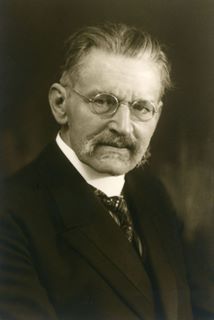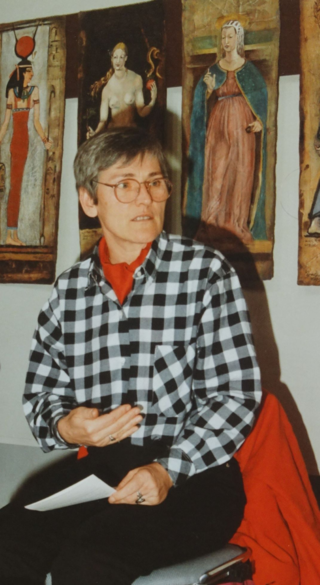Related Research Articles

In Norse mythology, Búri is a god and 'producer, father' of all other gods. An early ancestor of the Æsir gods, the principal pantheon in Old Norse religion. Búri was licked free from salty rime stones by the primeval cow Auðumbla over the course of three days. Búri's background beyond this point is unattested and he had a son, Borr, by way of an unknown process. Búri is attested in the Prose Edda, composed in the 13th century by Icelander Snorri Sturluson. The Prose Edda includes a quote from a 12th-century poem by skald Þórvaldr Blönduskáld that mentions the figure. Búri's mysterious origins are the subject of scholarly commentary and interpretation.

In Egyptian mythology, Sekhmet is a warrior goddess as well as goddess of medicine.
Elfriede Moser-Rath was an Austrian ethnologist specializing in folk tales (folklorist), and early modern literature.
Egbert Richter is a German freelance writer and lecturer, author of self-published treatises on Yoga, Vedanta, Esotericism and mythology, translations of some Upanishads, the Bhagavad Gita and the Yoga Sutras of Patanjali as well as original poetry. In his 1992 decipherment claim of the Indus script, he argues that the script is "based very largely on intuition, and this quality is also required for reading it", likening the process of "decipherment" to meditation, concluding that the Rbhus, who Richter alleges were priests of the Harappan civilization, invented the Indus script under the influence of Sumerian cuneiform. Werner (1999) confesses himself "at a loss how to evaluate" Richter's work, admitting the author has thorough knowledge of the various sources he uses, but at the same time completely lacks academic method, discipline or experience.
In Germanic paganism, Tamfana is a goddess. The destruction of a temple dedicated to the goddess is recorded by Roman senator Tacitus to have occurred during a massacre of the Germanic Marsi by forces led by Roman general Germanicus. Scholars have analyzed the name of the goddess and have advanced theories regarding her role in Germanic paganism.

Richard August Reitzenstein was a German classical philologist and scholar of Ancient Greek religion, hermetism and Gnosticism. He is described by Kurt Rudolph as “one of the most stimulating Gnostic scholars.” With Wilhelm Bousset, he was one of the major figures of the Religionsgeschichtliche Schule.
Der Luftpirat und sein lenkbares Luftschiff was a German pulp magazine with 165 issues from 1908–1911. The book followed the adventures of Captain Mors, the "Air Pirate".

Rudolf Simek is an Austrian philologist and religious studies scholar who is Professor and Chair of Ancient German and Nordic Studies at the University of Bonn. Simek specializes in Germanic studies, and is the author of several notable works on Germanic religion and mythology, Germanic peoples, Vikings, Old Norse literature, and the culture of Medieval Europe.
Heide Göttner-Abendroth is a German feminist advocating matriarchy studies, focusing on the study of matriarchal or matrilineal societies.

"The Creation of the Violin" is a Transylvanian/South Hungarian Roma (gypsy) fairy tale.

Heinz Zander was a German painter, graphic artist, illustrator and writer. Zander belongs to the Leipzig School. His fields of work are painting (oil), drawing, graphics and illustration. Zander was also active as a writer and published novels, stories and essays. He worked with painting techniques oriented towards the Old Masters, from which he developed a completely independent pictorial language. Zander was inspired by Bosch, Grünewald, Altdorfer, Cranach and Italian Mannerists. He worked mainly with colourful resin-oil glazes.
Heide Wunder is a German historian.
Christa Agnes Tuczay is an Austrian University professor in Medieval German Language and Literature at the Institute of German Studies at the University of Vienna. Tuczay is well known for her research on narratives and fairytales in the Middle Ages.

Christa Mulack was a German feminist theologian, educator and author.

Ulrich Pfeil is a German historian based in France.

Georg Hüsing was an Austrian historian and philologist who specialized in Germanic studies and mythography.
Elard Hugo Meyer was a German philologist who specialized in Germanic and Indo-European studies.

Edmund Mudrak was an Austrian philologist who specialized in Germanic studies.
Kathrin Hoffmann-Curtius was a German, independent art historian, who taught for a time at the universities of Tübingen, Hamburg, Trier and Vienna.
Imzuanna, also known as Ninzuanna, was a Mesopotamian goddess worshiped in Marad as the wife of the city's tutelary god, Lugal-Marada. She is attested in various god lists, in the literary composition Lament for Sumer and Ur, and in at least one theophoric name. Known sources mentioning her come from between the Ur III and Neo-Babylonian periods.
References
- ↑ Derungs (1996) is mentioned favourably as forwarding a feminist critique of C. G. Jung's depiction of femininity in Kocku von Stuckrad, Constructing Femininity—the Lilith Case, LAUD paper Universität Essen, Linguistic Agency: Series A; 474.